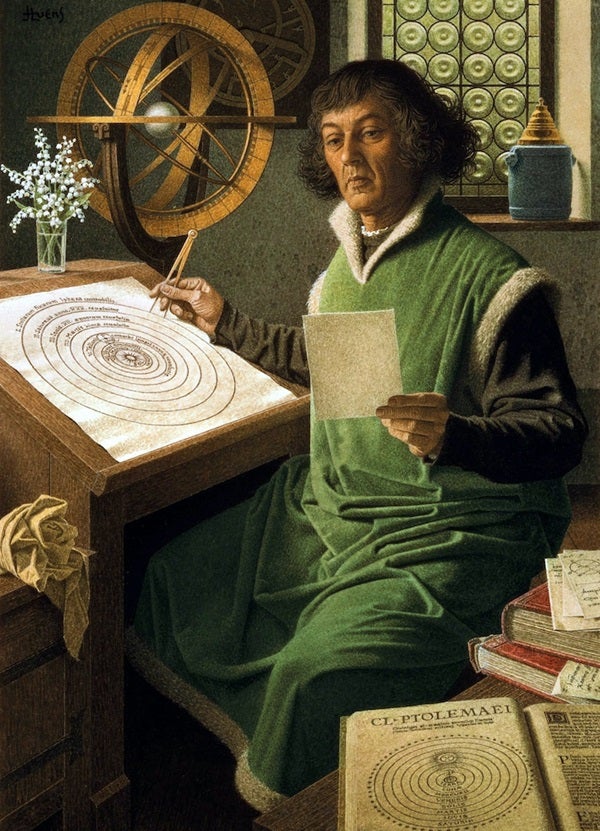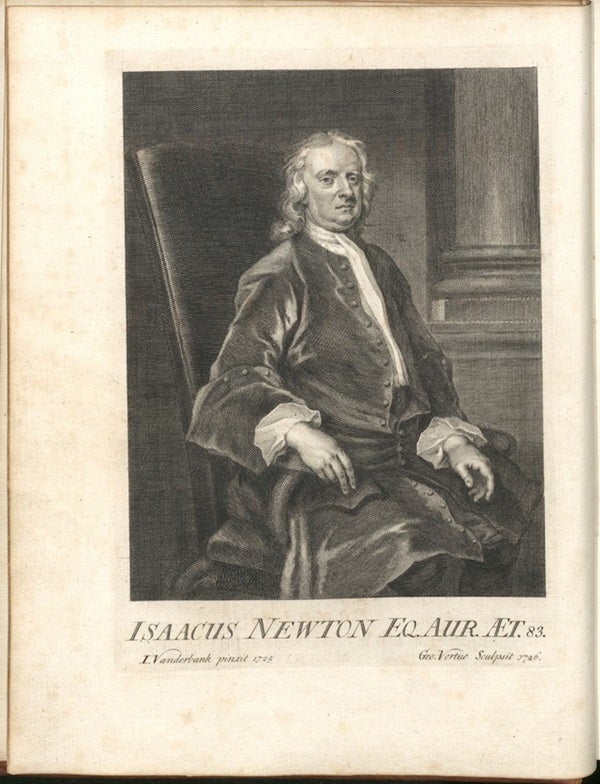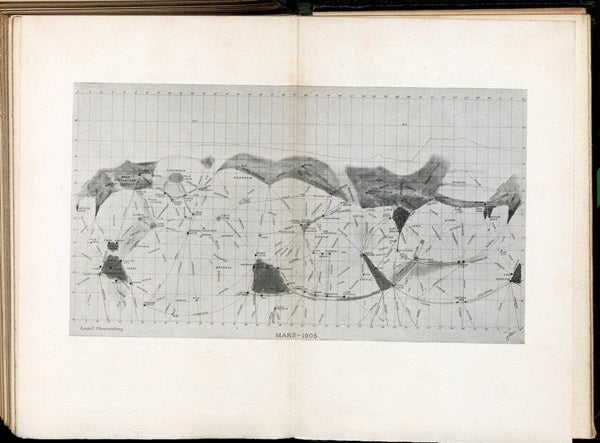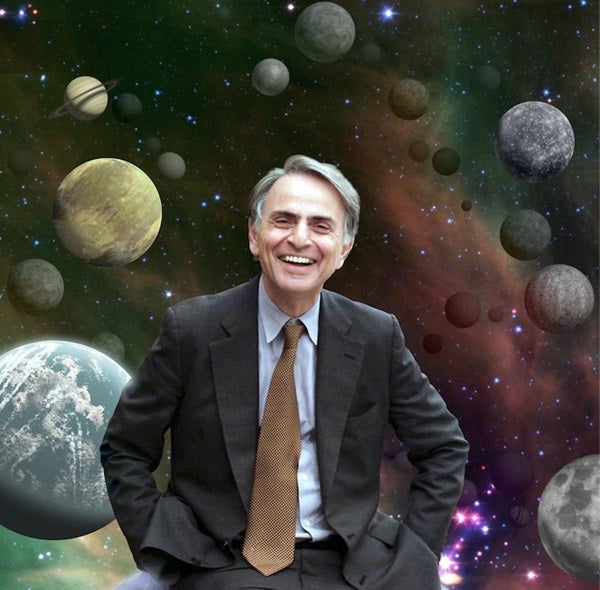There is no doubt that books have the power to change how people think about the world — and the universe — around them. But what makes a book influential? Does it need to have a major impact on society? Must it speak to the soul and help define the human condition?
I believe the answer to the last two questions is yes. These 10 astronomy books have had a significant impact not only on astronomical science, but also on the way humans think about our place and purpose in the cosmos. And for that, they should certainly be considered some of the most important astronomy books of all time.
1. On the Heavens, Aristotle (circa 350 b.c.)
On the Heavens, written by Aristotle nearly 2,400 years ago, is perhaps the most influential astronomy book in history. This work’s continued importance stems mostly from its historical significance to the Catholic Church. Aristotle’s work was adopted as a true description of God’s creation linked to biblical text. The separation of corruptible Earth from perfect heaven and the description of a geocentric universe aligned with the teachings of the Church. At the time of its writing, it provided compelling answers to a pre-telescopic world, even impacting historical events that would later follow. For instance, Christopher Columbus used the book, in part, as an inspiration for his voyages. Eventually, almost everything in it was proven incorrect, but On the Heavens, which is still in print, provides a fascinating view of astronomical evolution.
2. De Revolutionibus Orbium Coelestium, Nicolaus Copernicus (1543)
Nicolaus Copernicus’ book De Revolutionibus Orbium Coelestium (On the Revolutions of Heavenly Spheres) ignited a slow-burning change in the attitudes toward Aristotle’s geocentric universe. Copernicus, a canon of the Catholic Church, worked on the book for years but was reluctant to publish it for fear of backlash. He also realized his heliocentric thesis did not solve all the observational problems of the geocentric system.
Late author Arthur Koestler claimed that there was very little interest in De Revolutionibus, and that almost no one initially read the work after its publication in 1543. That’s at least partly because, packed with diagrams and tables, even a good English translation isn’t an easy read. However, historian of science Owen Gingerich spent years traveling the world looking at first and second editions of De Revolutionibus. He found that many copies, including those of Kepler and Galileo, had copious notes, a clear sign that it was closely studied. Eventually, enough controversy grew that it was placed on the Catholic Church’s Index of Forbidden Books, where it remained until 1758.
3. Sidereus Nuncius, Galileo Galilei (1610)
On a visit to the Linda Hall Library in Kansas City, Missouri, I was taken to the rare book room by former Librarian of History and Science Bruce Bradley. After donning white, acid-free archival gloves, Bradley showed me many iconic treasures. When he handed me the 1610 first edition of Galileo’s little book, Sidereus Nuncius (Starry Messenger), I felt like I was holding the Holy Grail! This small book challenged and changed astronomy forever.
After Galileo built his first telescope in 1609, he quickly turned the new device to the heavens — and he was astounded by what he saw. Knowing others were also making observations with telescopes, he rushed to publish Sidereus Nuncius, a straightforward book of observations, in March of 1610. It revealed a universe far more complex than ever imagined, and one that was also undeniably heliocentric. Galileo’s book went far beyond the theoretical work of Copernicus, providing the proof needed to displace Aristotle’s geocentric universe once and for all.
4. Philosophiæ Naturalis Principia Mathematica, Isaac Newton (1687)
Strictly speaking, Philosophiæ Naturalis Principia Mathematica (Mathematical Principles of Natural Philosophy), published in 1687 by Isaac Newton, is not an astronomy book. In 1684, Edmond Halley asked Newton to settle a dispute about the inverse square law, which describes, for instance, how a light dims farther away from its source. Newton said he had worked out that problem years before, but he could not find his papers. With Halley’s prodding, Newton reworked his calculations. The result was his seminal book, the Principia. It was met with both amazement and ridicule. Astronomers, however, soon understood its relevance for positional and navigational astronomy, which was of extreme importance in the 18th century. In the 19th century, Newton’s work was critical in determining planetary motions, the orbits of comets, the nature of binary stars, and even the scale of the visible universe. Sir John Herschel would later say, “The Principia of Newton is not, nor ever will be, put aside as an obsolete book.”
5. The Mechanism of the Heavens, Mary Somerville (1831)
The Mechanism of the Heavens, written by Mary Somerville and published in 1831, quickly became one of the most influential books on astronomy since Newton’s Principia. Somerville’s book was rapidly embraced as an important contribution to the understanding of celestial motion. Somerville had been asked to provide a translation of Pierre-Simon Laplace’s book Traité de mécanique celeste (Treatise of Celestial Mechanics). Instead, she produced a work of her own, which she said translated “from algebra into common language” the difficult concepts of celestial motions. It became extremely valuable to both astronomers and students, and it was used as a textbook for more than half a century. The book went through many revisions, keeping pace with astronomical developments over time. Mary Somerville was a brilliant mathematician and was hailed as the “queen of science” in her 1872 obituary in The Morning Post. During Somerville’s 91 years, she wrote five additional important science books and many scientific papers. Somerville’s astronomical talents and contributions proved that, if given the opportunity, women could match the men of science step for step.
6. Outlines of Astronomy, John Herschel (1849)
In the first half of the 19th century, astronomers were making amazing discoveries, but there was no single comprehensive summary of astronomy. Sir John Herschel’s 1849 book, Outlines of Astronomy, filled this void. In it, he writes about his own observations and research, as well as those of astronomers such as Giuseppe Piazzi, Heinrich Olber, Friedrich Bessel, and others. The topics in Outlines range from astronomical instruments to geography, time, comets, planetary perturbations, star clusters, and every other area of astronomical interest at that time. Herschel’s 700-page book was so influential that it went through 11 editions between 1849 and 1873. An American edition was published in 1902, and it was translated into many languages, including Chinese and Arabic. The astronomer Agnes M. Clarke said it was “perhaps the most completely satisfactory general exposition of a science ever penned.” High praise indeed.
7. Mars and Its Canals, Percival Lowell (1906)
Mars and Its Canals, published in 1906, sparked a martian mania with the public. This was the second of three books about the Red Planet by Percival Lowell. In his first work, Mars, published in 1895, Lowell suggested a race of martians to explain the regularity of the canals which he was convinced crisscrossed the globe. The book was not well regarded by many professional astronomers. In Mars and Its Canals, Lowell pushed the idea even further, telling of a peaceful race of martian engineers who had devised massive waterworks for their fading civilization. With this book, Lowell became an international celebrity and opened the floodgates to the popular imagination. Within six years of its appearance, Edgar Rice Burroughs had published his first Mars adventure. Songs were penned and movies were made. The idea of martian canals engineered by a race of extraterrestrials has long since vanished, but Lowell’s book sparked a desire to search for life on Mars, which still persists to this day.
8. Amateur Telescope Making, Albert G. Ingalls (1926–1953)
America entered a golden age of amateur astronomy at the beginning of the 20th century. For the astronomy hobbyist, however, even small “amateur” telescopes were expensive. So, backyard observers started building their own equipment. In 1926, Amateur Telescope Making, published by Scientific American, provided an answer to a growing need.
The first edition of Amateur Telescope Making was a compilation of articles written by Albert G. Ingalls. The idea grew from a 1921 article by Russell W. Porter titled “The Poor Man’s Telescope.” It was indeed a happy accident that had a profound impact on the hobby. Ingalls eventually met Porter, and they soon joined forces in providing clear instructions for building telescopes. The first book is filled with diagrams, formulas, and delightful sketches by Porter. Four years after its publication, Scientific American published an article by the newly famous Clyde Tombaugh titled “My Experience in Amateur Telescope Making.” In it, Tombaugh described being “armed now with the book Amateur Telescope Making,” which provided the information he needed to produce better optics. Not a bad endorsement! Eventually growing to three volumes, Amateur Telescope Making continued to inspire and instruct thousands of hobbyists, including myself, for decades. The collection has not lost its value or charm even today.
9. The Internal Constitution of the Stars, Arthur S. Eddington (1926)
The Internal Constitution of the Stars, written by Sir Arthur S. Eddington and published in 1926, completely changed our understanding of stellar physics and the internal structure of stars. In the early 20th century, astronomers were still struggling with the fundamental questions of why stars shine, where they get their energy, and what mechanisms cause them to evolve. Eddington was particularly interested in Cepheid variable stars. He wanted to understand the physics of their rhythmic variations in brightness. Eddington’s book explores how radiation from internal heat and pressure can keep a star stable and affect its luminosity. Eddington also showed that hydrogen and helium are under immense pressure at the cores of stars, where temperatures reach millions of degrees.
The Internal Constitution of the Stars (often called the ICS) was first presented as a paper at a 1920 meeting of the British Association. In the paper, Eddington said, “A star is drawing on some vast reservoir of energy by means unknown to us.” In the late 1930s, Austrian-Swedish physicist Lise Meitner, as well as others, supplied the answer: nuclear fusion. Eddington’s work on stellar interiors propelled and advanced our understanding of the lives of stars and drove the ultimate discovery of what makes them shine. In many ways, his book was a catalyst that ignited modern astrophysics.
10. Cosmos, Carl Sagan (1980)
“The Cosmos is all that is or ever was or ever will be.” With the opening words of his book, Cosmos, Carl Sagan inspired, excited, and enthralled a generation of readers. Appearing in 1980, the book was a companion text to the 13-part television series on PBS, Cosmos: A Personal Voyage. Cosmos spent 70 weeks on the New York Times’ bestseller list. It also received the Hugo Award for Best Non-Fiction Book in 1981. It was used in college astronomy classes, as well as enrichment and literature classes, around the country, inspiring many young readers to pursue careers in science.
With Cosmos, Sagan showed that human curiosity, ingenuity, and imagination have provided an understanding of the great universal connections that are woven through the human experience. “The cosmos is within us,” he said in the television incarnation. “We are made of star-stuff.” These are just a few of Sagan’s insights and expressions that have entered the lexicon of our vocabulary. Carl Sagan’s Cosmos not only changed the way we experience the wonder of the universe, but also proved that science literature can be both inspiring and entertaining.
The test of time
The 19th-century art critic John Ruskin wrote that there are “books of the hour” and “books of all time.” The 10 books discussed here are seminal works that have propelled astronomy forward. A few are now treasured for their literary appeal, and some have entered the realm of historians, scholars, and collectors. But this in no way diminishes how important or influential all these books have been or will continue to be to astronomy and our love of the stars. They will always live on.














